Article Catalog
Java, a programming language widely used in enterprise application development, has many mature architectures and frameworks for building applications of all sizes. In this article, we will introduce commonly used architectures in Java that excel in different scenarios, covering the evolution from traditional three-tier architectures to modern microservices architectures.
1. Three-tier architecture
The three-tier architecture is a classic application architecture that divides an application into three main parts:- Presentation Layer: The presentation layer is usually the interface through which the user interacts with the application, which can be a web interface, a mobile application, or a desktop application. In Java, common presentation layer technologies include JavaServer Pages (JSP), Servlets, and modern front-end frameworks such as React and Angular.
- Business Logic Layer: The business logic layer contains the core functionality of the application and the code that handles the business logic. In Java, business logic is usually implemented using Java classes and EJBs (Enterprise JavaBeans).
- Data Access Layer (DAL): The data access layer is responsible for interacting with a database or other data store to perform data read and write operations.In Java, common data access technologies include Java Persistence API (JPA) and Hibernate.
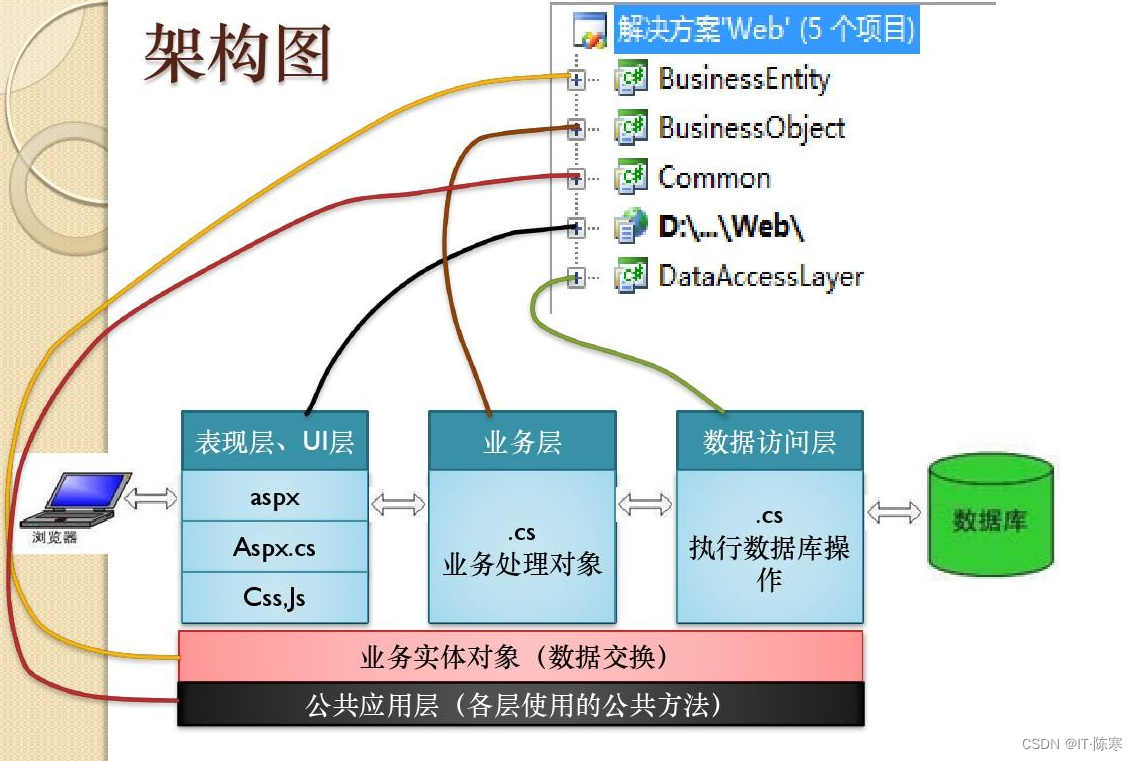 Core concepts: The three-tier architecture divides an application into three main layers, including the Presentation Layer, the Business Logic Layer, and the Data Access Layer. This architecture helps to separate the different functions of an application, making it easier to maintain and extend.
Pros:
Core concepts: The three-tier architecture divides an application into three main layers, including the Presentation Layer, the Business Logic Layer, and the Data Access Layer. This architecture helps to separate the different functions of an application, making it easier to maintain and extend.
Pros:
- Clear hierarchical structure.
- Easy to maintain and expand.
- High reusability.
- There may be performance bottlenecks.
- Communication overhead.
// Presentation Layer
public class StudentController {
private StudentService studentService;
public StudentController() {
this.studentService = new StudentService();
}
public void addStudent(String name, int age) {
studentService.addStudent(name, age);
}
}
// Business Logic Layer
public class StudentService {
private StudentRepository studentRepository;
public StudentService() {
this.studentRepository = new StudentRepository();
}
public void addStudent(String name, int age) {
// Add business logic
Student student = new Student(name, age);
studentRepository.save(student);
}
}
// Data Access Layer
public class StudentRepository {
public void save(Student student) {
// Database operations
}
}2. Spring Framework
The Spring Framework is a lightweight development framework widely used in Java applications. It provides a flexible way to build enterprise-class applications that include the following key features:- Dependency Injection: The Spring Framework separates dependencies between components from the code through dependency injection. This approach improves the testability and maintainability of the code.
- Aspect-Oriented Programming (AOP): Spring supports AOP, allowing developers to separate cross-cutting concerns (e.g., logging, transaction management) from the core logic of the application.
- Integrate different technology stacks: Spring can integrate with many different technologies, including database access, messaging, security, web development, etc. Spring Boot is part of the Spring ecosystem, making it easier to build stand-alone, self-contained, production-level applications.
- Spring Cloud: Spring Cloud provides tools and patterns for building distributed systems, including service discovery, load balancing, circuit breakers, distributed configuration, and more.

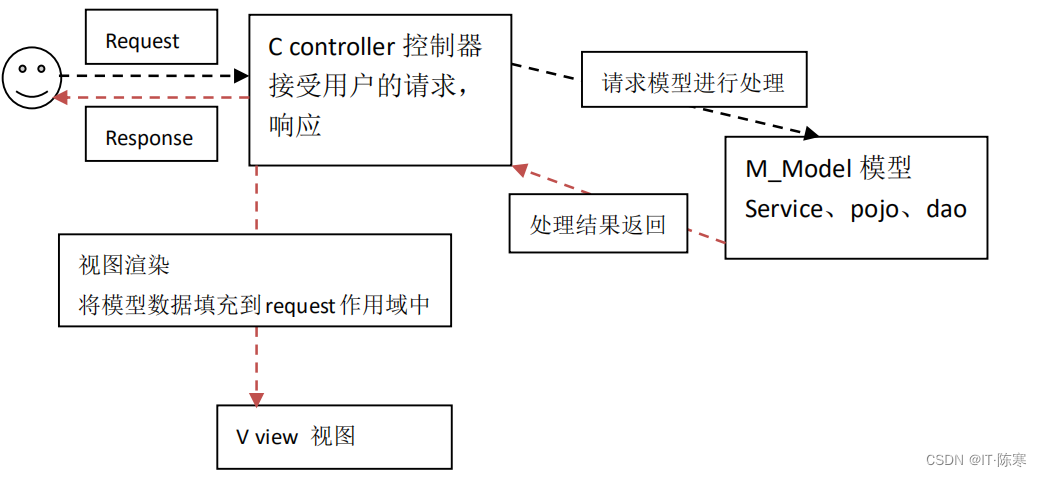
- Simplifies Java development.
- Highly testable.
- Large communities and rich ecosystems.
- The initial learning curve may be steeper.
@RestController
public class HelloWorldController {
@RequestMapping("/")
public String hello() {
return "Hello, World!";
}
}
@SpringBootApplication
public class MyApplication {
public static void main(String[] args) {
SpringApplication.run(MyApplication.class, args);
}
}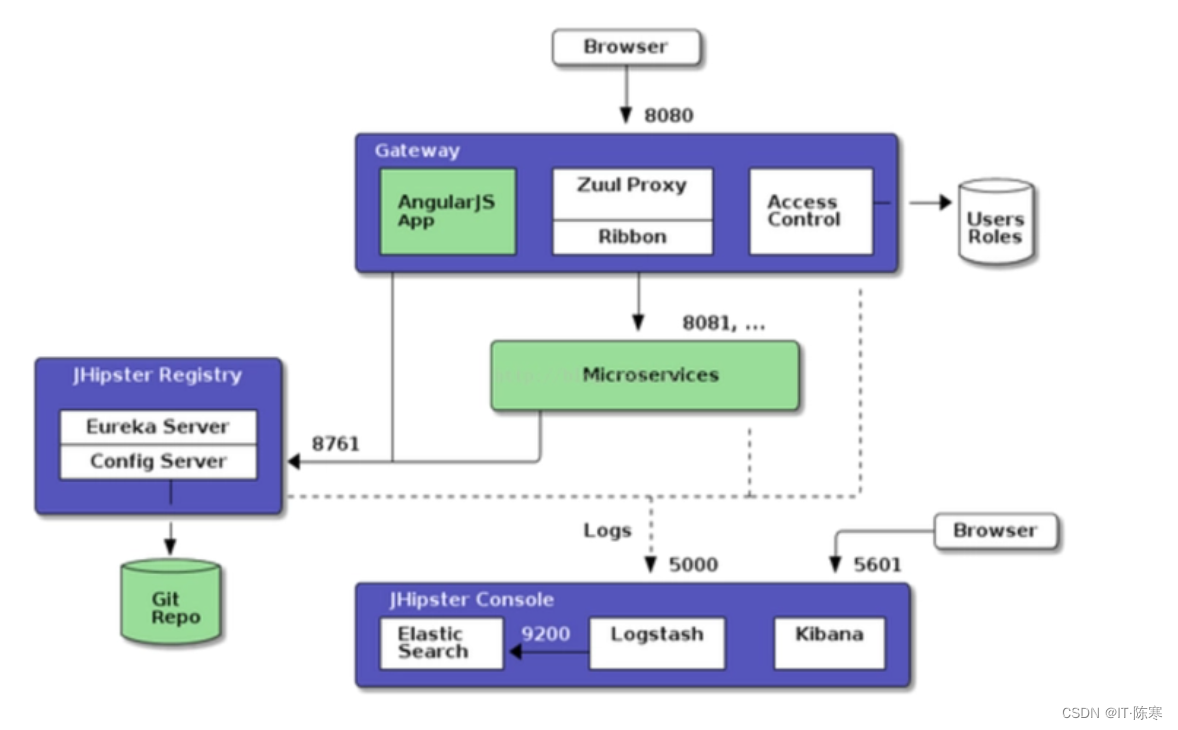 Pros:
Pros:
- Get up and running quickly.
- Embedded web server.
- Automated configuration and conventions are superior to configuration.
- There may be an over-reliance on automated configuration.
@RestController
public class HelloWorldController {
@RequestMapping("/")
public String hello() {
return "Hello, World!";
}
}
@SpringBootApplication
public class MyApplication {
public static void main(String[] args) {
SpringApplication.run(MyApplication.class, args);
}
}3. Microservices architecture
Microservice architecture is a service-centric architectural style that splits applications into small services, each with its own independent business logic and database. These services communicate through APIs and can be developed, deployed and extended independently. In Java, microservice architectures are typically built using Spring Boot and Spring Cloud.Spring Boot simplifies the creation and deployment of microservices, while Spring Cloud provides a set of tools to address common problems in microservice architectures such as service registration and discovery, load balancing, and circuit breaker patterns.
Core concepts: Microservices architecture is an architecture that splits applications into small, independent services. Each microservice runs in its own process and can use a different technology stack. Microservices communicate through APIs or messaging.
Benefits of Microservices Architecture:
In Java, microservice architectures are typically built using Spring Boot and Spring Cloud.Spring Boot simplifies the creation and deployment of microservices, while Spring Cloud provides a set of tools to address common problems in microservice architectures such as service registration and discovery, load balancing, and circuit breaker patterns.
Core concepts: Microservices architecture is an architecture that splits applications into small, independent services. Each microservice runs in its own process and can use a different technology stack. Microservices communicate through APIs or messaging.
Benefits of Microservices Architecture:
- Flexibility: Each microservice can be developed, deployed and scaled independently, which allows teams to deliver functionality faster.
- Scalability: Each microservice can scale independently, adjusting resources as needed.
- Fault Tolerance: Failure of a single microservice does not affect the entire application.
- Technological diversity: Different microservices can use different technology stacks to fulfill different needs.
- Complexity of distributed systems.
- Management of inter-service communication.
- Complexity of monitoring and troubleshooting.
// User services
@RestController
public class UserServiceController {
@Autowired
private UserService userService;
@GetMapping("/users/{userId}")
public User getUser(@PathVariable String userId) {
return userService.getUser(userId);
}
}
@Service
public class UserService {
public User getUser(String userId) {
// Obtain user information from databases or other services
}
}
// Order Services
@RestController
public class OrderServiceController {
@Autowired
private OrderService orderService;
@PostMapping("/orders")
public void createOrder(@RequestBody Order order) {
orderService.createOrder(order);
}
}
@Service
public class OrderService {
public void createOrder(Order order) {
// Handle order creation logic
}
}4. Java EE(Enterprise Edition)
Java EE is the enterprise version of the Java platform, providing a set of specifications for building large, distributed, and scalable applications.Java EE includes a variety of technologies such as Servlets, JSPs, EJBs, JMS (Java Message Service), JPA, and CDI (Contexts and Dependency). Injection) for developing enterprise-class applications.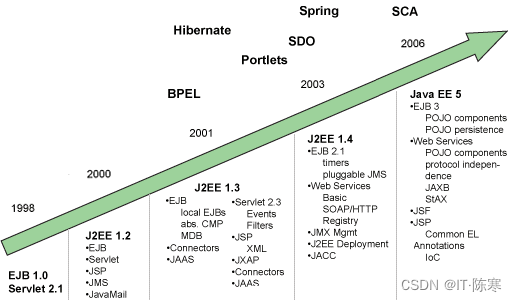 Core concepts: Java EE is the enterprise version of the Java platform for building large, distributed and scalable applications. It includes several specifications such as Servlets, JSP, EJB, JMS, JPA, and CDI for developing enterprise-class applications.
Pros:
Core concepts: Java EE is the enterprise version of the Java platform for building large, distributed and scalable applications. It includes several specifications such as Servlets, JSP, EJB, JMS, JPA, and CDI for developing enterprise-class applications.
Pros:
- Enterprise-class features such as transaction management and security.
- Scalability for large applications.
- Rich library and framework support.
- Configuration and management complexity.
- More complex compared to lightweight frameworks.
// Servlet
@WebServlet("/account")
public class AccountServlet extends HttpServlet {
protected void doGet(HttpServletRequest request, HttpServletResponse response) throws ServletException, IOException {
// Processing account information
}
}
// EJB
@Stateless
public class AccountService {
@PersistenceContext
private EntityManager entityManager;
public void transferMoney(Account from, Account to, double amount) {
// Execute the transfer logic
}
}5. Responsive architecture
Responsive architecture is an architectural style of building applications in an asynchronous and event-driven manner, aiming for a high degree of scalability and performance.Responsive programming in Java typically uses ReactiveX libraries, such as RxJava, as well as the Spring Reactor framework.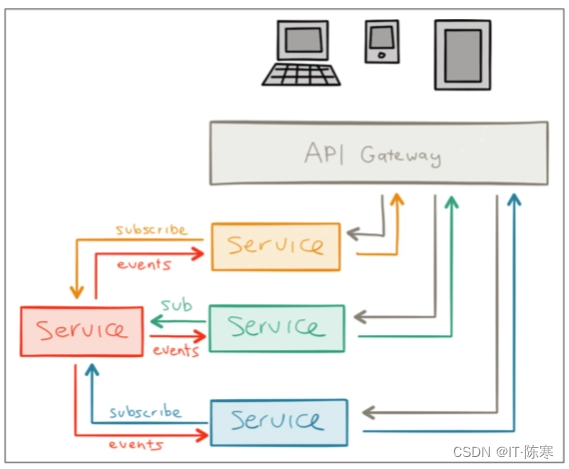 Key Features of Responsive Architecture
Key Features of Responsive Architecture
- Elasticity: Responsive applications can automatically scale up or down based on load. This means that more resources can be allocated during high loads and freed up during low loads to ensure performance and efficiency.
- Message-Driven: Responsive applications typically communicate using a message passing mechanism, which helps reduce coupling and allows for loose integration between components.
- Resilient Fault Tolerance (RFT): Responsive systems are able to handle failures and continue working in a recoverable manner. This usually involves fault-tolerance mechanisms, automatic retries, and fault isolation.
// Example: Responsive Front-End Component
import React from 'react';
function ProductList(props) {
return (
<div className="product-list">
{props.products.map(product => (
<div key={product.id} className="product">
<img src={product.image} alt={product.name} />
<h3>{product.name}</h3>
<p>{product.description}</p>
</div>
))}
</div>
);
}
export default ProductList;6. Big data architecture
With the rise of Big Data technologies, Java has also played an important role in the Big Data space.Hadoop and Spark are two widely used Big Data processing frameworks that use Java as their primary programming language. What is Big Data Architecture?
Big data architecture is an approach to designing and managing systems for large-scale data processing and storage. Such architectures are designed to handle large amounts of data from a variety of sources, both structured and unstructured. The goal of big data architecture is to achieve high performance, high availability and high scalability to support complex data analysis and mining tasks.
Key Features of Big Data Architecture
What is Big Data Architecture?
Big data architecture is an approach to designing and managing systems for large-scale data processing and storage. Such architectures are designed to handle large amounts of data from a variety of sources, both structured and unstructured. The goal of big data architecture is to achieve high performance, high availability and high scalability to support complex data analysis and mining tasks.
Key Features of Big Data Architecture
- Distributed Storage (DSS): Big data systems often use distributed storage technologies such as Hadoop HDFS or Amazon S3 to store data and provide redundancy and fault tolerance.
- Batch and Stream Processing (Batch and Stream Processing): The Big Data architecture supports batch and stream processing to handle both static and real-time data. tools such as Apache Spark and Apache Kafka are used for these purposes.
- Distributed Computing (DCC): Big data systems utilize multiple nodes on multiple computers to process data in parallel. This can significantly improve computational performance.
// Example: Data Analysis with Apache Spark
val rawData = spark.read.textFile("hdfs://path/to/data")
val wordCounts = rawData
.flatMap(line => line.split(" "))
.groupBy("word")
.count()
wordCounts.show()7. Domain-Driven Design (DDD)
Domain-driven design is a software development methodology that emphasizes mapping business logic and data models directly into code.There are many frameworks and tools in Java, such as Hibernate and Spring Data, that are used to support domain-driven design.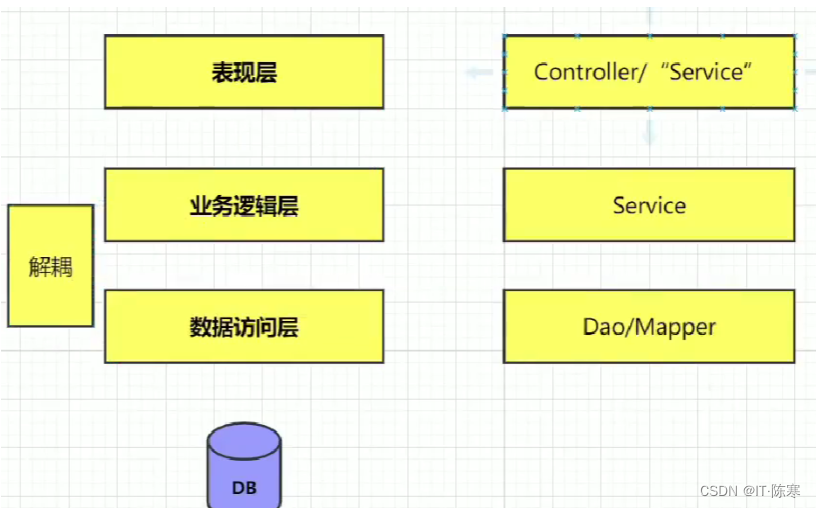 What is Domain Driven Design (DDD)?
Domain-driven design is a software design methodology that focuses on deeply understanding and modeling problem domains (usually business domains) and mapping those models to software.The goal of DDD is to create domain models with high cohesion and low coupling to better meet business requirements.
Key Concepts of Domain Driven Design
What is Domain Driven Design (DDD)?
Domain-driven design is a software design methodology that focuses on deeply understanding and modeling problem domains (usually business domains) and mapping those models to software.The goal of DDD is to create domain models with high cohesion and low coupling to better meet business requirements.
Key Concepts of Domain Driven Design
- Domain: The domain is part of the problem space and includes business rules, entities, value objects, and aggregates. In DDD, the collar
- Entity: Entities are domain objects with unique identifiers whose state and behavior are defined by the identifiers.
- Value Object: Value objects are domain objects without unique identifiers, and their equivalence is defined in terms of attributes rather than identifiers.
// Example: Commodity Domain Model
public class Product {
private Long id;
private String name;
private Price price;
// Omit other properties and methods
}
public class Price {
private BigDecimal amount;
private Currency currency;
// Omit other properties and methods
}8. Android development architecture
For mobile application development, Java is an important programming language on the Android platform. Android development usually uses architectural patterns such as MVC (Model-View-Controller) or MVVM (Model-View-ViewModel).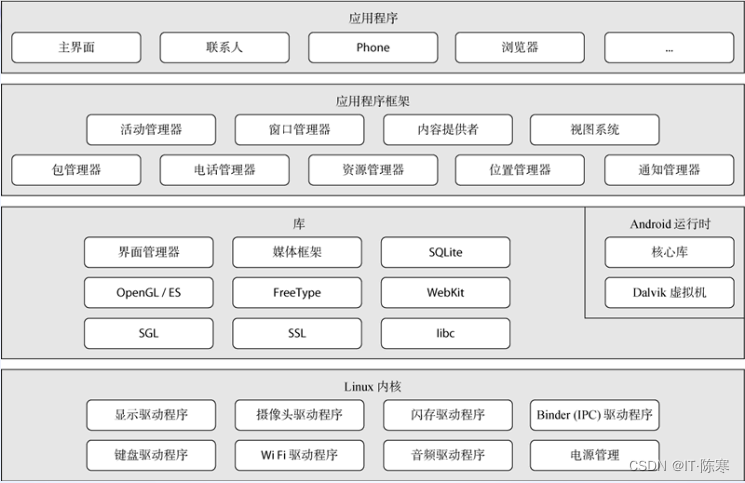 What is Android Development Architecture?
Android development architecture is a methodology for designing applications, specifically for creating mobile applications that run on the Android operating system. It emphasizes the maintainability, testability and scalability of the application.Android development uses architectural patterns such as MVVM (Model-View-ViewModel) and MVP (Model-View-Presenter).
Key Concepts of Android Development Architecture
What is Android Development Architecture?
Android development architecture is a methodology for designing applications, specifically for creating mobile applications that run on the Android operating system. It emphasizes the maintainability, testability and scalability of the application.Android development uses architectural patterns such as MVVM (Model-View-ViewModel) and MVP (Model-View-Presenter).
Key Concepts of Android Development Architecture
- Model: The model represents the data and business logic of the application. It is independent of the user interface and handles the acquisition and processing of data.
- View: A view is a representation of the user interface. It is responsible for displaying data and interacting with the user. In Android, views are usually defined by XML layout files.
- ViewModel: The ViewModel is an intermediate layer that connects the model to the view. It contains the data needed by the view and handles the user interface logic.ViewModel is often used with LiveData to notify the view when data changes.
// Example: ViewModel in Android
public class PostViewModel extends ViewModel {
private LiveData<List<Post>> posts;
public PostViewModel() {
// Initialize the data fetch logic
posts = Repository.getPosts();
}
public LiveData<List<Post>> getPosts() {
return posts;
}
}reach a verdict
Java, as a versatile programming language, has a rich set of architectures and frameworks to meet the needs of a variety of different application scenarios. From the traditional three-tier architecture to modern microservices, responsive and big data architectures, Java’s ecosystem continues to evolve to adapt to the changing needs of software development. Choosing the right architecture and framework for your project’s needs is critical to development success. Different architectures have their own benefits and challenges, and developers need to make an informed choice based on the size, performance needs, and complexity of their project. Regardless of which architecture you choose, Java provides a wealth of tools and libraries to help developers build high-quality applications.wind up
Thank you for your support and encouragement! Content you may be interested in:
- 【Java Interview Tips】Java Interview Octet – Mastering Essential Interview Knowledge (Catalog Article)
- 【Java Learning Route】Complete Java Learning Roadmap 2023
- 【AIGC Artificial Intelligence】What is Chat GPT, how to use Chat GPT for beginners and what do you need to be aware of?
- 【Java real-world projects】SpringBoot + SSM practice: to build efficient and convenient enterprise-level Java takeaway ordering system
- 【Data Structure Learning】Starting from scratch: a complete path to learning data structures

